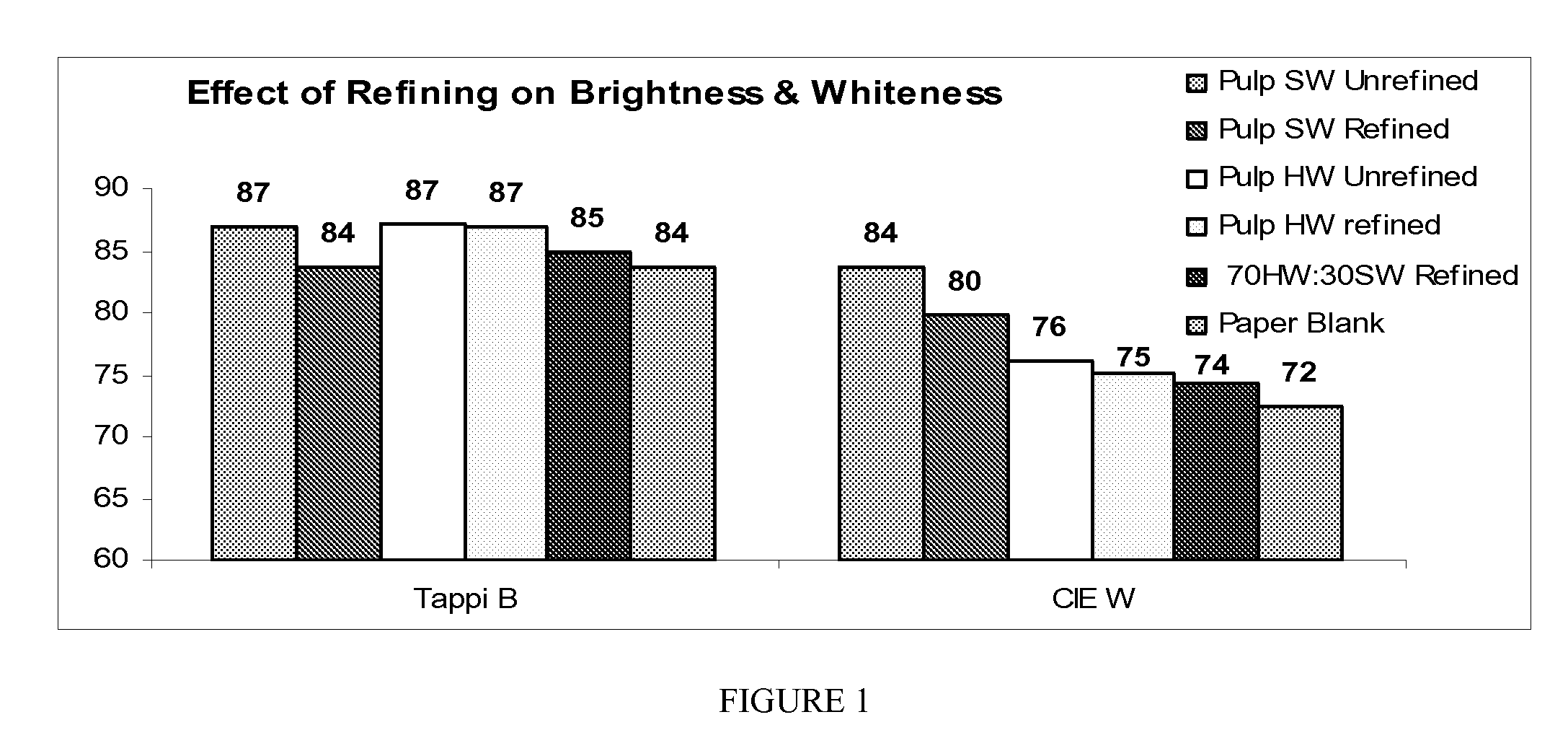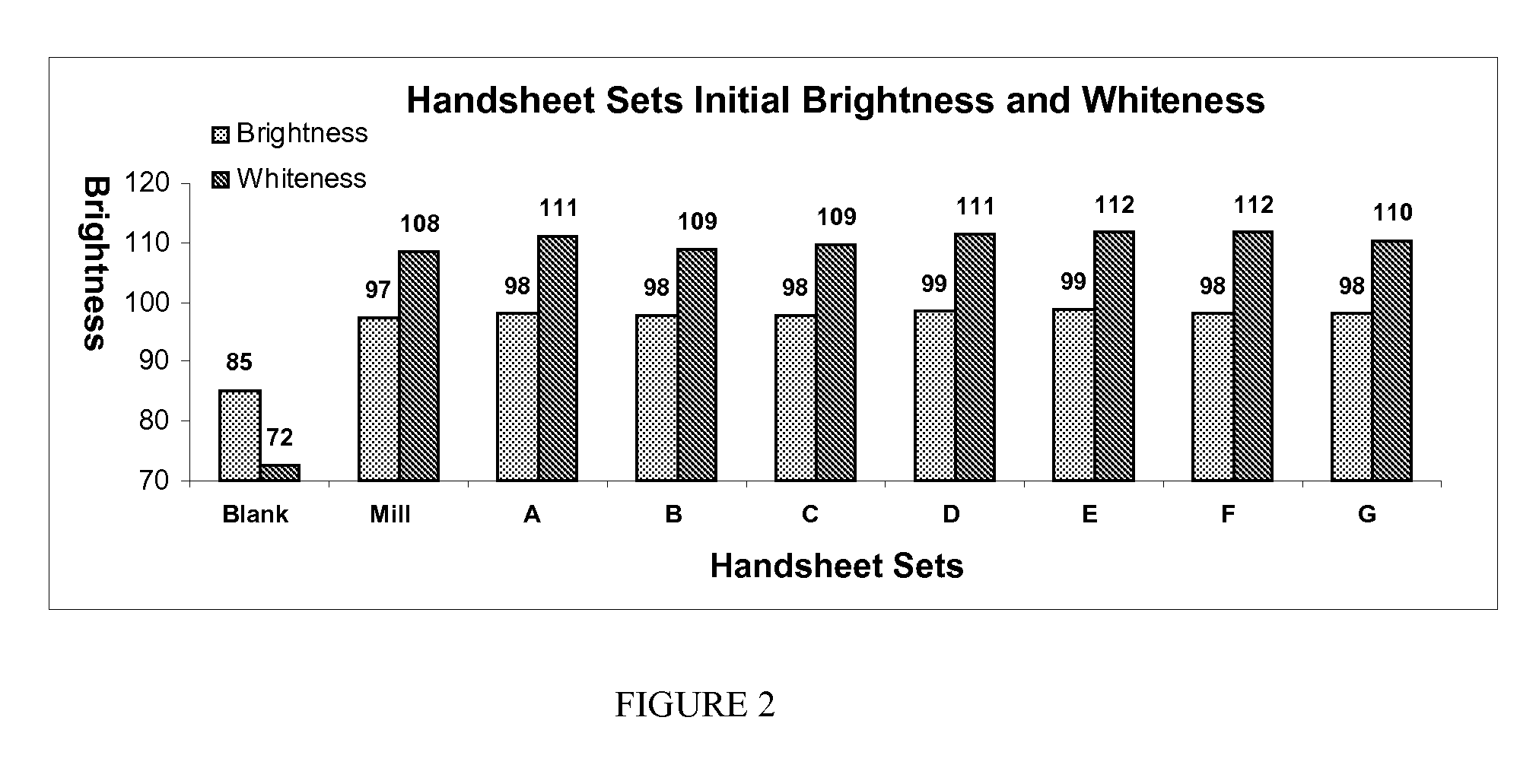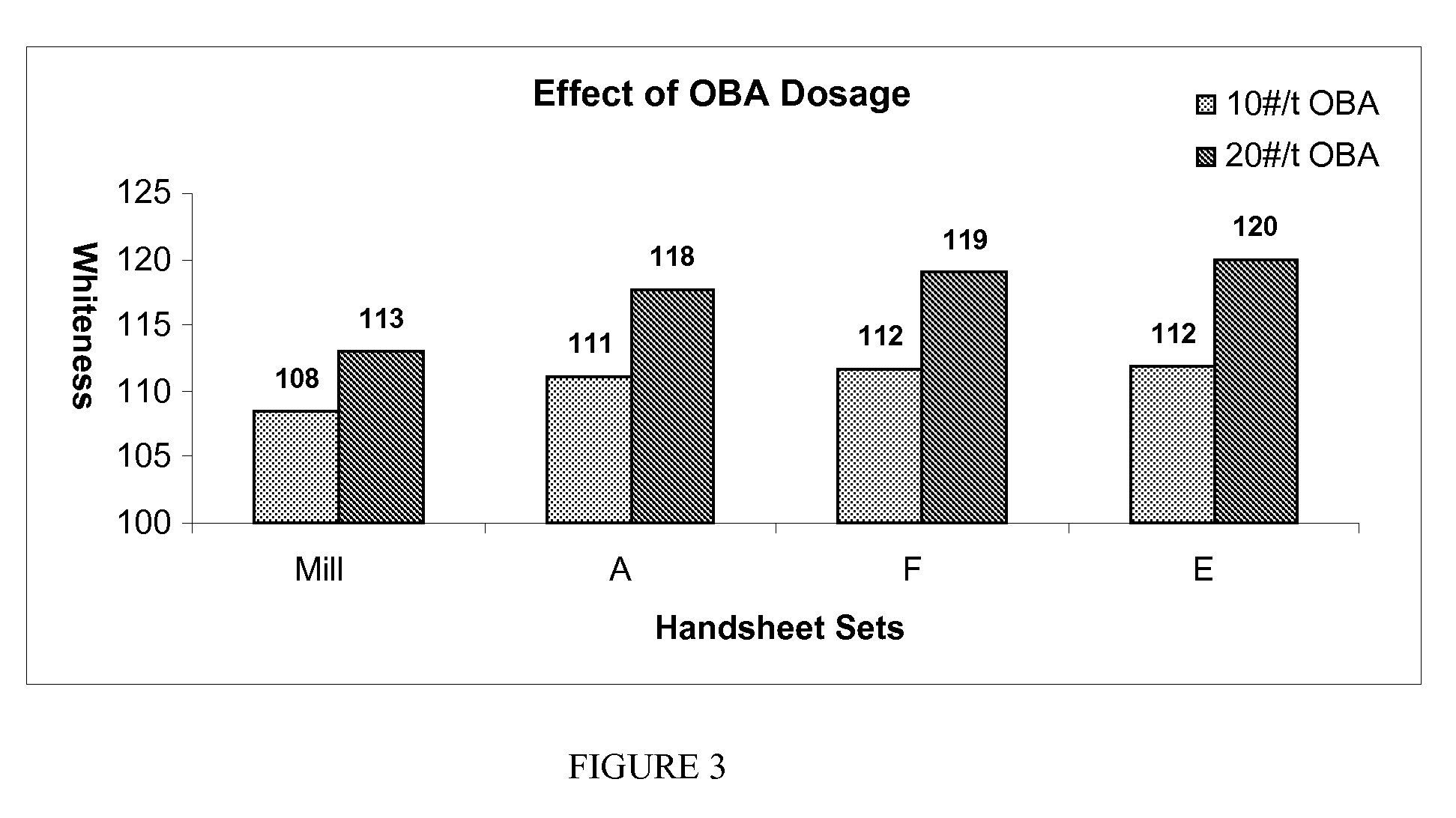Surface additives for whiteness improvements to reverse whiteness loss due to calcium chloride
a technology of calcium chloride and surface additives, which is applied in the field of paper making processes for improving brightness and whiteness, can solve the problems of reducing paper whiteness, affecting paper whiteness, and affecting the chemistry of size presses, so as to add whiteness and brightness to paper, and prevent significant whiteness loss
- Summary
- Abstract
- Description
- Claims
- Application Information
AI Technical Summary
Benefits of technology
Problems solved by technology
Method used
Image
Examples
example 1
[0039]To address loss of whiteness at a mill using the ColorLok Technology, preliminary experiments were done to determine the root cause of the whiteness loss.
[0040]Pulp pads were used to measure the initial brightness and whiteness of the pulp. Handsheets were used to study the effect chemicals have on whiteness and brightness when the chemicals are added to the wet end or size press. For this set of experiments, pulp pads and handsheets were made using unrefined and refined hardwood (HW) and softwood (SW) pulp from a Southern U.S. mill. Part of the pulp received was refined and the rest of the pulp was left unrefined. Both handsheets and pulp pads were made with refined and unrefined HW and SW fibers. Pads were also made with a mixture of 70% HW and 30% SW fibers. Pulp pads and handsheets were tested for brightness and whiteness. To obtain the initial brightness and whiteness measurements, blank pulp pads and handsheets were made, that is no chemicals were added to either the pul...
example 2
[0042]A Southern U.S. mills base paper was simulated by adding chemicals to the fibers in the sequence typical to the mill. Handsheets were also made with the same fibers, but with different wet end chemicals and sequences. 81 different sets of handsheets were made using the same pulp, but with different wet end chemicals and sequences to compare the whiteness performance and determine the factors that contribute to handsheet whiteness.
[0043]With the starting handsheet brightness of 84 and whiteness of 72, 81 sets of handsheets were made with different chemicals added to the fibers. From the 81 handsheets, 7 with highest whiteness (A G) were selected in addition to the mills handsheet and a set of blank handsheets made without chemicals.
[0044]FIG. 2 shows brightness (B) and whiteness (W) for different handsheet sets: 1) blank, 2) the control mill set, and 3) handsheet sets A-G. The results show that mill handsheet set has higher B and W than the blank handsheet set, but lower B and ...
example 3
[0045]From the 10 different sets of handsheets (A G), three sets (A, F, and E) in addition to the mills set were selected to test the effect of the OBA dosage. In this set of experiments handsheets with different wet end chemicals and sequences were made using two different dosages of OBA 10 lb / ton and 20 lb / ton as shown in FIG. 3. Handsheets made with 20 lb / ton OBA tetra at the wet end obtained higher whiteness than those made with 10 lb / ton OBA at the wet end. Mill handsheets had lower whiteness than the other handsheet set at both OBA dosages.
[0046]As shown in FIG. 3, this set of experiments shows that with higher OBA dosages it is possible to increase the whiteness of all handsheets. However, when comparing handsheet sets mill to F and E, it is clear that the mill could benefit by changing the chemicals in the base sheet to increase the whiteness of their paper.
[0047]Table 1 shows the formulations for handsheet sets F and G. This illustrates that the chemicals and their sequence...
PUM
| Property | Measurement | Unit |
|---|---|---|
| particle size | aaaaa | aaaaa |
| particle size | aaaaa | aaaaa |
| specific surface area | aaaaa | aaaaa |
Abstract
Description
Claims
Application Information
 Login to View More
Login to View More - R&D
- Intellectual Property
- Life Sciences
- Materials
- Tech Scout
- Unparalleled Data Quality
- Higher Quality Content
- 60% Fewer Hallucinations
Browse by: Latest US Patents, China's latest patents, Technical Efficacy Thesaurus, Application Domain, Technology Topic, Popular Technical Reports.
© 2025 PatSnap. All rights reserved.Legal|Privacy policy|Modern Slavery Act Transparency Statement|Sitemap|About US| Contact US: help@patsnap.com



